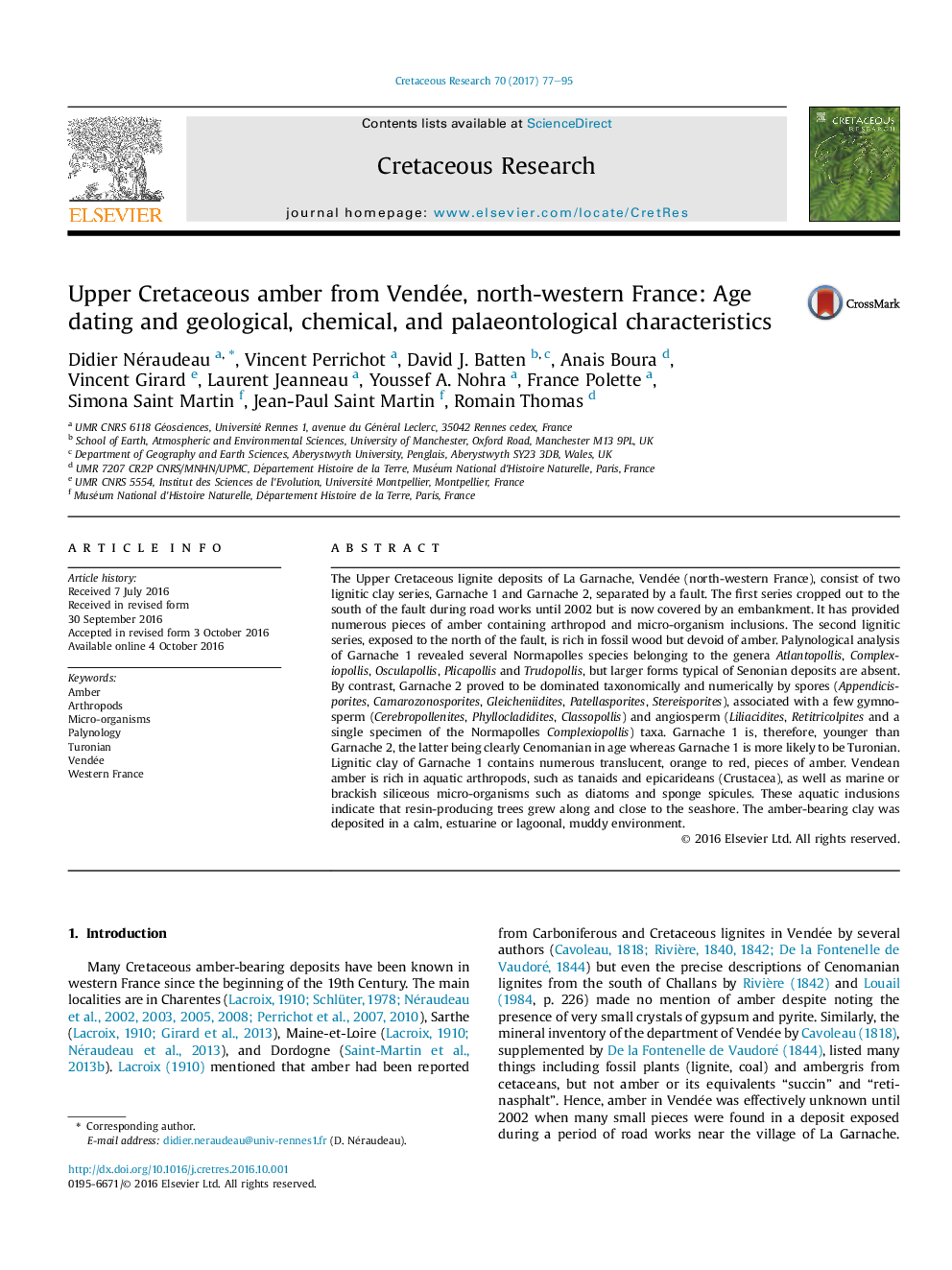| Article ID | Journal | Published Year | Pages | File Type |
|---|---|---|---|---|
| 4746623 | Cretaceous Research | 2017 | 19 Pages |
•A very fossiliferous amber is described from the Turonian of France.•It consists of the first record of arthropods in Turonian amber from this part of Europe.•Both terrestrial and marine macro- or micro-organisms are preserved in the amber.•Palynological data from the amber deposit precise the Turonian age and characterize the amber forest.•Wood analysis and amber chemistry identify for the first time Cupressaceae conifers for Mid Cretaceous resin producers.
The Upper Cretaceous lignite deposits of La Garnache, Vendée (north-western France), consist of two lignitic clay series, Garnache 1 and Garnache 2, separated by a fault. The first series cropped out to the south of the fault during road works until 2002 but is now covered by an embankment. It has provided numerous pieces of amber containing arthropod and micro-organism inclusions. The second lignitic series, exposed to the north of the fault, is rich in fossil wood but devoid of amber. Palynological analysis of Garnache 1 revealed several Normapolles species belonging to the genera Atlantopollis, Complexiopollis, Osculapollis, Plicapollis and Trudopollis, but larger forms typical of Senonian deposits are absent. By contrast, Garnache 2 proved to be dominated taxonomically and numerically by spores (Appendicisporites, Camarozonosporites, Gleicheniidites, Patellasporites, Stereisporites), associated with a few gymnosperm (Cerebropollenites, Phyllocladidites, Classopollis) and angiosperm (Liliacidites, Retitricolpites and a single specimen of the Normapolles Complexiopollis) taxa. Garnache 1 is, therefore, younger than Garnache 2, the latter being clearly Cenomanian in age whereas Garnache 1 is more likely to be Turonian. Lignitic clay of Garnache 1 contains numerous translucent, orange to red, pieces of amber. Vendean amber is rich in aquatic arthropods, such as tanaids and epicarideans (Crustacea), as well as marine or brackish siliceous micro-organisms such as diatoms and sponge spicules. These aquatic inclusions indicate that resin-producing trees grew along and close to the seashore. The amber-bearing clay was deposited in a calm, estuarine or lagoonal, muddy environment.
